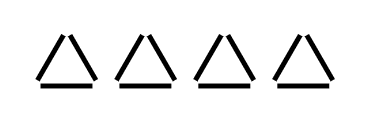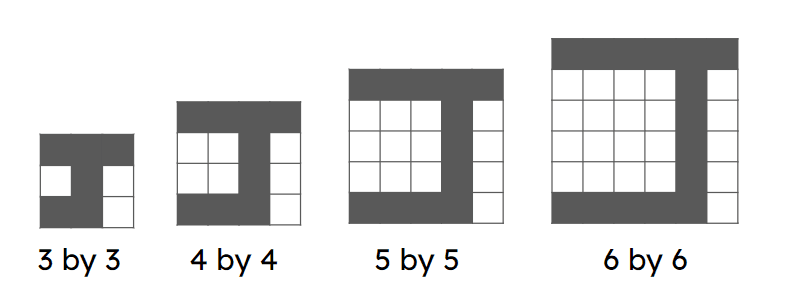Myths about teaching can hold you back


- Year 7
Checking understanding of expressions and equations
I can generalise a situation using words to express what is happening.


- Year 7
Checking understanding of expressions and equations
I can generalise a situation using words to express what is happening.
These resources will be removed by end of Summer Term 2025.
Switch to our new teaching resources now - designed by teachers and leading subject experts, and tested in classrooms.
These resources were created for remote use during the pandemic and are not designed for classroom teaching.
Lesson details
Key learning points
- Linear sequences can be generated from a rule.
- Linear sequences that follow a rule can be described in words.
- Changing one part of a situation can affect other parts.
Keywords
Generalise - To generalise is to formulate a statement or rule that applies correctly to all relevant cases.
Common misconception
Pupils might think that a pattern increasing by 3 each time has the rule add 3.
Pupils should think about the number of lines per square and the relationship between squares and lines. Avoid consecutive patterns to start
To help you plan your year 7 maths lesson on: Checking understanding of expressions and equations, download all teaching resources for free and adapt to suit your pupils' needs...
To help you plan your year 7 maths lesson on: Checking understanding of expressions and equations, download all teaching resources for free and adapt to suit your pupils' needs.
The starter quiz will activate and check your pupils' prior knowledge, with versions available both with and without answers in PDF format.
We use learning cycles to break down learning into key concepts or ideas linked to the learning outcome. Each learning cycle features explanations with checks for understanding and practice tasks with feedback. All of this is found in our slide decks, ready for you to download and edit. The practice tasks are also available as printable worksheets and some lessons have additional materials with extra material you might need for teaching the lesson.
The assessment exit quiz will test your pupils' understanding of the key learning points.
Our video is a tool for planning, showing how other teachers might teach the lesson, offering helpful tips, modelled explanations and inspiration for your own delivery in the classroom. Plus, you can set it as homework or revision for pupils and keep their learning on track by sharing an online pupil version of this lesson.
Explore more key stage 3 maths lessons from the Expressions and equations unit, dive into the full secondary maths curriculum, or learn more about lesson planning.

Licence
Prior knowledge starter quiz
6 Questions
Q1.Match the numbers with the correct statements.
10 -
is a multiple of 5
9 -
is a multiple of 3
14 -
is a multiple of 7
16 -
is a multiple of 4
Q2.Which calculation represents '6 lots of 5'?
Q3.Given that $$21\times 17=357$$ which of the following are true?
Q4.Look at the pattern shown. What does the 12 represent in the calculation $$3\times 4=12$$ ?

Q5.Look at the pattern shown. What does the 4 represent in the calculation $$3\times 4=12$$ ?

Q6.Look at the pattern shown. What does the 3 represent in the calculation $$3\times 4=12$$ ?

Assessment exit quiz
6 Questions
Q1.Which description best explains what is meant by a generalised rule?
Q2.True or false: multiplying by 5 then adding 1 is the same as multiplying by 6
Q3.Alex is going hiking, he takes 2 toothpaste tablets per day of his trip. Complete the generalised rule: The number of toothpaste tablets he needs is the number of days multiplied by
Q4.Alex is going hiking, he packs 3 snack bars per day. Select any true statements
Q5.Each sandwich contains 2 slices of bread, 3 slices of cheese and 12 olives. If you are told the number of sandwiches, match each calculation to what it will find.
$$\times 2$$ -
finds the amount of bread given the number of sandwiches
$$\times 3$$ -
finds the amount of cheese given the number of sandwiches
$$\times 4$$ -
finds the number of olives given the amount of cheese
$$\div 4$$ -
finds the amount of cheese given the number of olives
$$\div 3 \times 2$$ -
finds the amount of bread given the amount of cheese
$$\div 2 \times 3$$ -
finds the amount of cheese given the amount of bread
Q6.Jun is drawing J shape patterns in square grids like the example shown. Which rule best describes how to find the number of shaded squares for any sized pattern?


